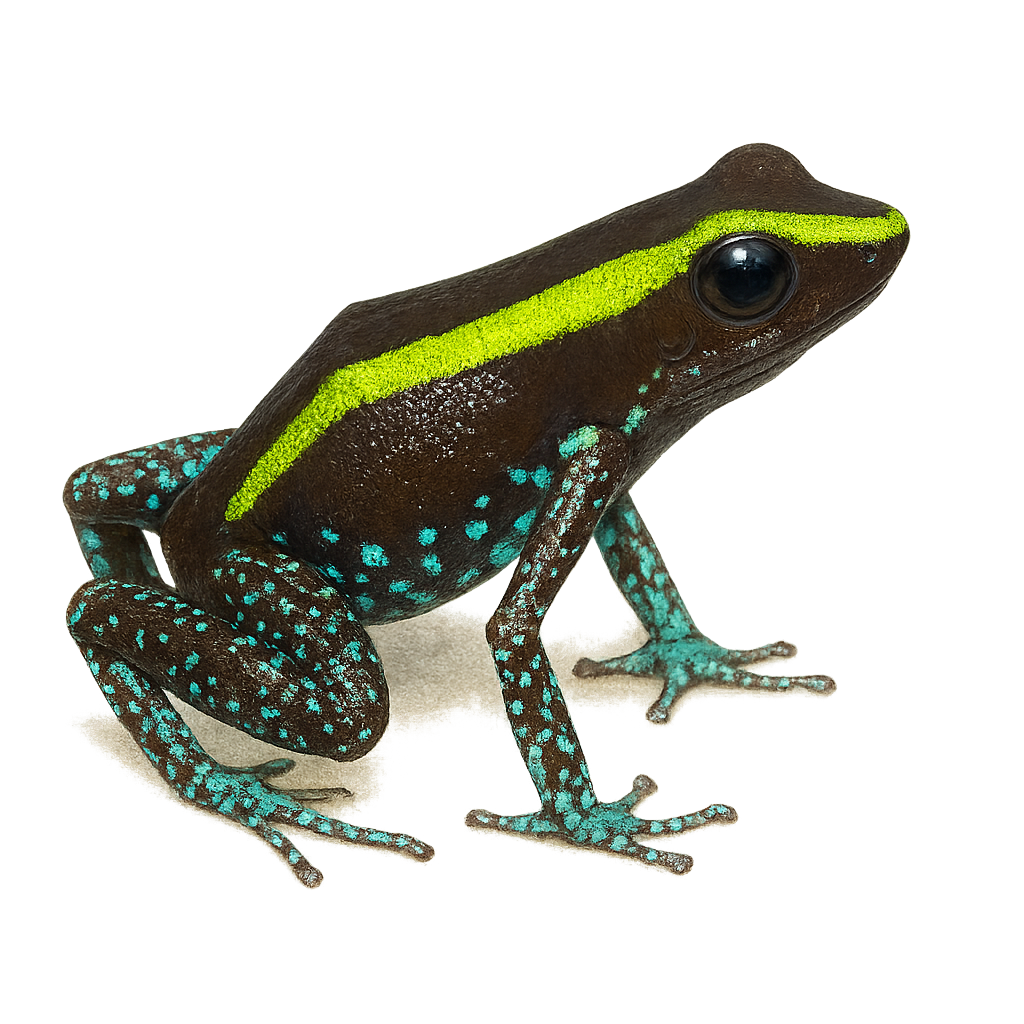Your wildlife photography guide.
Explore the golden-striped poison frog in detail, study its behavior, prepare your shots.
Where to observe and photograph the golden-striped poison frog in the wild
Learn where and when to spot the golden-striped poison frog in the wild, how to identify the species based on distinctive features, and what natural environments it inhabits. The WildlifePhotographer app offers tailored photography tips that reflect the golden-striped poison frog’s behavior, helping you capture better wildlife images. Explore the full species profile for key information including description, habitat, active periods, and approach techniques.
Golden-striped poison frog
Scientific name: Phyllobates aurotaenia

IUCN Status: Vulnerable
Family: DENDROBATIDAE
Group: Amphibians
Sensitivity to human approach: Suspicious
Minimum approach distance: 2 m
Reproduction period: March to August
Incubation: 10–14 jours
Births: April to September
Habitat:
humid tropical forests, undergrowth
Activity period :
Primarily active during the day, with peak activity in the morning and late afternoon.
Identification and description:
Phyllobates aurotaenia, commonly known as the Golden-striped poison frog, is an extremely toxic frog species belonging to the Dendrobatidae family. Native to the humid tropical forests of Colombia, this frog is characterized by its smooth, shiny skin, often black with yellow or green stripes. It secretes a potent toxin through its skin, used by local populations to poison arrows. Measuring about 3 to 4 cm, this species is diurnal and primarily feeds on small insects. Due to deforestation and habitat loss, it is considered vulnerable by the IUCN.
Recommended lens:
Macro – adjust based on distance, desired framing (portrait or habitat), and approach conditions.
Photography tips:
When photographing Phyllobates aurotaenia, it is essential to maintain a safe distance of at least 2 m due to its toxicity. Use a macro lens to capture the details of its shiny skin and distinctive patterns. Opt for times of the day when natural light is abundant to achieve sharp and well-lit shots. Be patient and avoid sudden movements to prevent scaring the animal.
The WildlifePhotographer App is coming soon!
Be the first to explore the best nature spots, track rutting seasons, log your observations, and observe more wildlife.
Already 1 431 wildlife lovers subscribed worldwide

